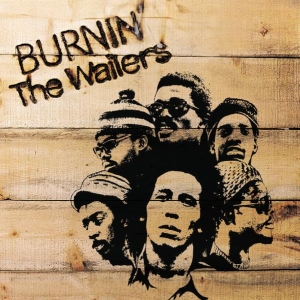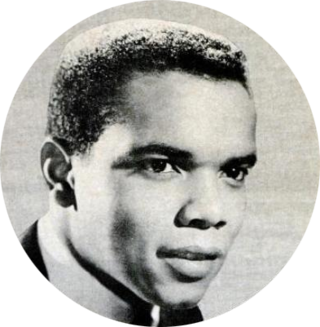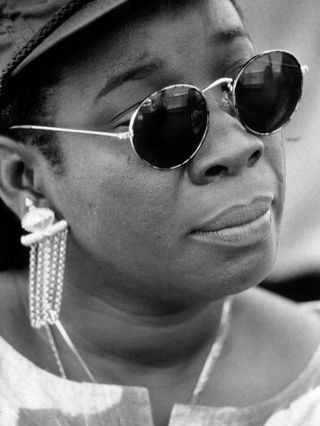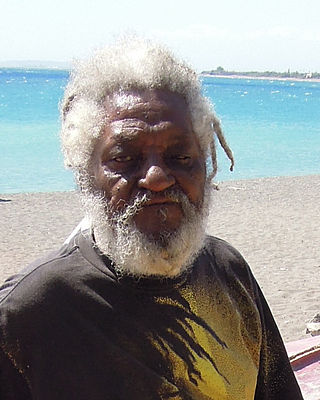
Exodus is the ninth studio album by Jamaican reggae band Bob Marley and the Wailers, first released in June 1977 through Island Records, following Rastaman Vibration (1976). The album's production has been characterized as laid-back with pulsating bass beats and an emphasis on piano, trumpet and guitar. Unlike previous albums from the band, Exodus thematically moves away from cryptic story-telling; instead it revolves around themes of change, religious politics, and sexuality. The album is split into two halves: the first half revolves around religious politics, while the second half is focused on themes of making love and keeping faith.

Burnin' is the sixth album by Jamaican reggae group the Wailers, released in October 1973. It was written by all three members and recorded and produced by the Wailers in Jamaica, contemporaneously with tracks from the Catch a Fire album with further recording, mixing and completion while on the Catch a Fire tour in London. It contains the song "I Shot the Sheriff". It was the last album before Marley, Peter Tosh and Bunny Wailer decided to pursue solo careers, while continuing their local releases through their company Tuff Gong Records. A commercial and critical success in the United States, Burnin' was certified Gold and later added to the National Recording Registry, with the Library of Congress deeming it historically and culturally significant.

Catch a Fire is the fifth studio album by the reggae band The Wailers, released in April 1973. It was their first album released by Island Records. After finishing a UK tour with Johnny Nash, they had started laying down tracks for JAD Records when a disputed CBS contract with Danny Sims created tensions. The band did not have enough money to return to Jamaica, so their road manager Brent Clarke approached producer Chris Blackwell, who agreed to advance The Wailers money for an album. They instead used this money to pay their fares back home, where they completed the recordings that constitute Catch a Fire. The album has nine songs, two of which were written and composed by Peter Tosh; the remaining seven were by Bob Marley. While Bunny Wailer is not credited as a writer, the group's writing style was a collective process. For the immediate follow-up album, Burnin', also released in 1973, he contributed four songs. After Marley returned with the tapes to London, Blackwell reworked the tracks at Island Studios, with contributions by Muscle Shoals session musician Wayne Perkins, who played guitar on three overdubbed tracks. The album had a limited original release under the name The Wailers in a sleeve depicting a Zippo lighter, designed by graphic artists Rod Dyer and Bob Weiner; subsequent releases had an alternative cover designed by John Bonis, featuring an Esther Anderson portrait of Marley smoking a "spliff", and crediting the band as Bob Marley and the Wailers.

John Lester Nash Jr. was an American singer-songwriter, best known in the United States for his 1972 hit "I Can See Clearly Now". Primarily a reggae and pop singer, he was one of the first non-Jamaican artists to record reggae music in Kingston.
Vincent Ford, known as "Tata" or "Tartar", was a Jamaican songwriter best known for receiving writing credit for "No Woman, No Cry", the reggae song made famous by Bob Marley & The Wailers, as well as three other Bob Marley songs. However, controversy persisted as to whether the compositions had actually been written by Marley himself, and had been credited to Ford to allow Marley to avoid contractual obligations, resulting in a legal battle that ended with the Marley estate being granted control of the songs.

Bob Marley and the Wailers were a Jamaican ska, rocksteady and reggae band. The founding members, in 1963, were Bob Marley, Peter Tosh, and Bunny Wailer.
Joseph Benjamin Higgs was a reggae musician from Jamaica. In the late 1950s and 1960s he was part of the duo Higgs and Wilson together with Roy Wilson. He was a popular artist in Jamaica for four decades and is also known for his work tutoring younger musicians including Bob Marley and the Wailers and Jimmy Cliff.

Alfarita Constantia Marley is a Cuban-born Jamaican singer, songwriter and entrepreneur. She is the widow of reggae legend Bob Marley. Along with Marcia Griffiths and Judy Mowatt, she was a member of the reggae vocal group the I Threes, the backing vocalists for Bob Marley and the Wailers.
Tuff Gong is the brand name associated with a number of businesses started by Bob Marley and the Marley family. 'Tuff Gong' comes from Marley's nickname, which was in turn an echo of that given to founder of the Rastafari movement, Leonard "The Gong" Howell.

Marcia Llyneth Griffiths is a Jamaican singer. One reviewer described her by noting "she is known primarily for her strong, smooth-as-mousse love songs and captivating live performances".

Alvin "Seeco" Patterson was a Cuban-born Jamaican percussionist. He was a member of The Wailers Band.
Franklin Delano Alexander "Junior" Braithwaite was a reggae musician from Kingston, Jamaica and the youngest member of the vocal group, The Wailing Wailers.
Neville Garrick is a Jamaican-born Los Angeles-based graphic artist, and photographer. He is a graduate of the University of California, Los Angeles (UCLA).

Robert Nesta Marley was a Jamaican singer, musician, and songwriter. Considered one of the pioneers of reggae, his musical career was marked by fusing elements of reggae, ska, and rocksteady, as well as his distinctive vocal and songwriting style. Marley's contributions to music increased the visibility of Jamaican music worldwide, and made him a global figure in popular culture. Over the course of his career, Marley became known as a Rastafari icon, and he infused his music with a sense of spirituality. He is also considered a global symbol of Jamaican music and culture and identity, and was controversial in his outspoken support for democratic social reforms. In 1976, Marley survived an assassination attempt in his home, which was thought to be politically motivated. He also supported legalisation of marijuana, and advocated for Pan-Africanism.
John Masouri is a journalist, reviewer, contributor and author for reggae music and several of its musical offshoots including dub, roots and dancehall.
Lee Jaffe is an American artist, photographer, filmmaker, musician, and producer.

Bruno Blum is a French singer songwriter, guitar player, music producer and musicologist sometimes nicknamed "Doc Reggae". He is mostly known for his work in the reggae, Caribbean music, rock music and African musics fields, and also works as a comic book artist, illustrator, painter, photographer, video director, writer, journalist, music historian, interpreter and speaker.

Neville O'Riley Livingston, known professionally as Bunny Wailer, was a Jamaican singer-songwriter and percussionist. He was an original member of reggae group The Wailers along with Bob Marley and Peter Tosh. A three-time Grammy Award winner, he is considered one of the longtime standard-bearers of reggae music. He was also known as Jah B, Bunny O'Riley, and Bunny Livingston.

Winston Hubert McIntosh, OM, professionally known as Peter Tosh, was a Jamaican reggae musician. Along with Bob Marley and Bunny Wailer, he was one of the core members of the band the Wailers (1963–1976), after which he established himself as a successful solo artist and a promoter of Rastafari. He was murdered in 1987 during a home invasion.
The following outline is provided as an overview of and topical guide to Bob Marley:










